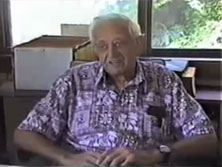My wife and I recently spent a weekend in Penghu, a beautiful, stark archipelago between the main island of Taiwan and China.
Since Penghu is under KMT rule, I expected to find street signs in Magong, the capital, in some old system (e.g., MPS2 or perhaps bastardized Wade-Giles) or perhaps even Hanyu Pinyin. (Highway signs, however, are a different matter. They’re put up by the central government, which means that relatively recent ones are in Tongyong Pinyin, regardless of which party might control the area.)
This first street sign, however, is unmistakably in Tongyong Pinyin, giving “Wunsyue” (for what in Hanyu Pinyin would be “Wenxue”).
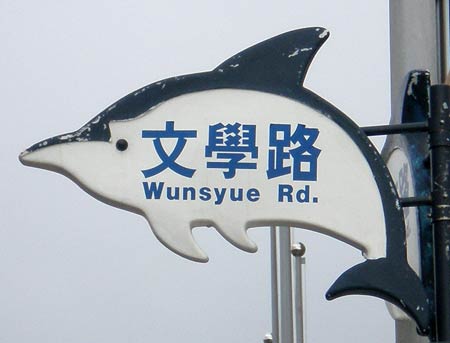
But I looked around some more and saw signs in Hanyu Pinyin, such as “Huimin” for what in Tongyong would be “Hueimin” and “Hui[‘]an” for what in Tongyong would be “Huei[-]an.”
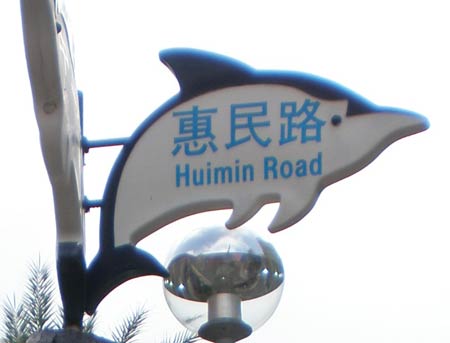
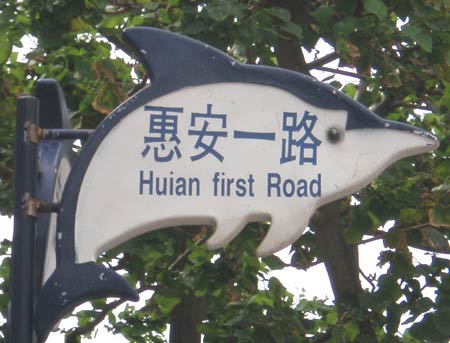
So were there some signs in Hanyu Pinyin after all? Apparently only coincidentally. The previous two hui signs were probably just a mistake, the result of Taiwan’s standard, sloppy chabuduo jiu keyi approach to signage. Here’s a sign on the same street as above; but in this case “惠” is romanized huei and not hui. (And “first” is missing, from both the Hanzi and romanization.)

Most signs were in Tongyong, such as these. (Note that Penghu, too, has a Hot Milk Road.)
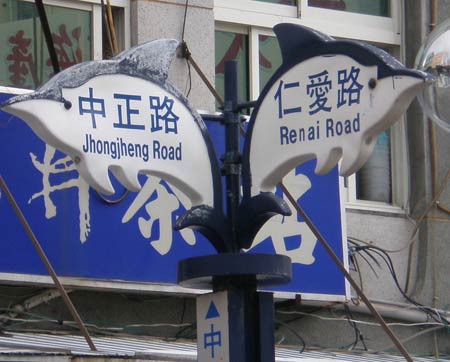
So, Tongyong after all. Well, at least they don’t have InTerCaPiTaLiZaTion … or do they?
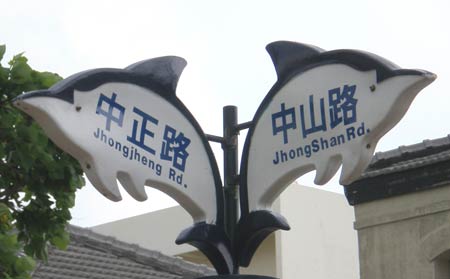
Fortunately, that sign was a one-off. I didn’t spot InTerCaPiTaLiZaTion elsewhere. Here’s another sign from the same road:
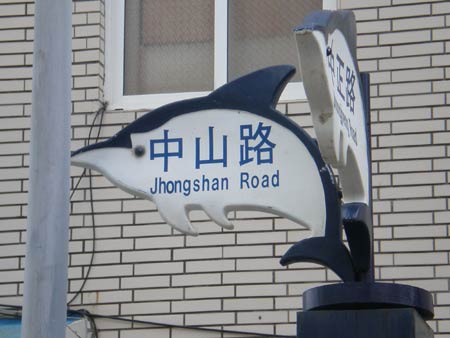
So, in short, Penghu’s street signs are in Tongyong Pinyin — but with plenty of mistakes and inconsistencies (e.g., missing apostrophes/hyphens, “first” rather than “1st”, and both “Road” and “Rd.”). It’s especially ridiculous that the KMT-administered Penghu bothered with Tongyong, especially since it was free to adopt Hanyu Pinyin. Now it’s going to have to change its signs over to Hanyu Pinyin. But some of the signs would need to be updated anyway, since many already show signs of age, with letters missing. (My guess is that Penghu put up such low-quality signs that in the annual windy season some of the letters just get blown away.)
Here’s a sign in little danger of having its writing blow away any time soon. This is what a much older Magong street sign looks like. Note that it must be read from right to left: 復國路 (Fuguo Road — “Recover Atlantis the Lost Country Road”).
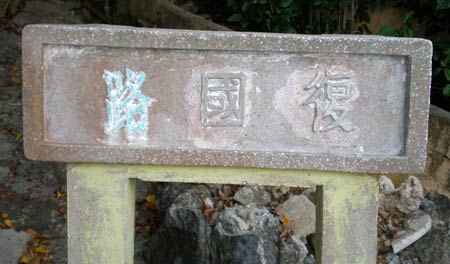
Finally, here’s something that isn’t a street sign at all. But it is nonetheless a sign of historic importance, since it’s a stela that commemorates the Ming Chinese official Shen Yourong telling the red-haired barbarians (i.e., Westerners — in this case, the Dutch) to get the hell out of Penghu. (The Dutch were told they could instead go to Taiwan, since back then China didn’t care about it in the least.) The composite photo shows both the 400-year-old stone original and a modern reproduction in wood.
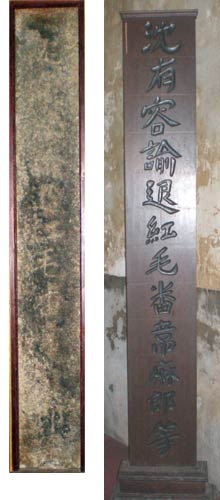
The text reads “Shěn Yǒuróng yù tuì hóngmáo fān[zi] Wéimálàng děng” (「沈有容諭退紅毛番韋麻郎等」): “Shen Yourong orders the red-haired foreigners under [Dutch commander] Wybrand van Warwijck to withdraw.”

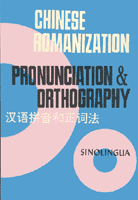 I’ve just added another long section of Yin Binyong’s book on the detailed rules for Hanyu Pinyin. This part (pp. 78-138) covers
I’ve just added another long section of Yin Binyong’s book on the detailed rules for Hanyu Pinyin. This part (pp. 78-138) covers 